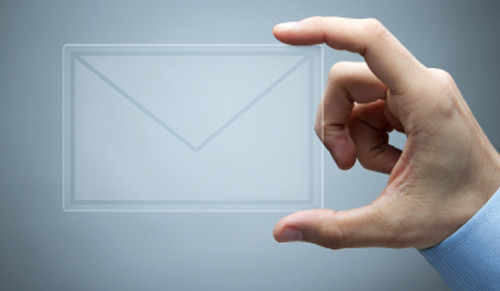Email may have been around since 1993 but its users are growing every year. According to the Radicati Group, there were around 2.1 billion email users worldwide in 2012. That number is set to grow beyond 2.8 billion in the next four years.
From a marketer’s perspective, that means a growing proportion of potential customers and users that can be targeted via email. However, it also means there’s an awful lot of email out there. On the SendGrid platform alone, more than 100 billion emails have been sent.
In the modern inbox, the competition to be read is hot and the risk of recipients unsubscribing or marking email as spam is significant.
If your bounce-rates are high, or you’re seeing a lot of unsubscribes, you’re not reaching the people you want to reach and also damaging your brand’s reputation.
No one likes spammers!
We at SendGrid have created some key guidelines for marketers to follow to avoid the spam folder and ensure that emails and newsletters get delivered to enthusiastic subscribers.
1. Send a welcome message
All new subscribers should receive a welcome message – they are the cornerstone of a well-run email program. When was the last time you signed up for a new online service and didn’t receive an immediate message confirming the sign-up? Welcome messages are not just confirmations: they’re an opportunity to engage with subscribers and start the relationship off on the right foot.
2. Keep a clean list, avoid spam traps and keep bounce-rates low
A clean, well-managed subscriber list can be your best asset. ‘Dirty’ lists, with out-of-date information, are a major cause of deliverability failure and are sure to damage your brand’s reputation. ‘List hygiene’ is the process of removing ‘bad’ addresses in a timely manner. Good list hygiene practices are essential if you want to avoid spam traps and keep your bounce rates low, which are key factors for preserving and even improving your reputation.
If a lot of your mail is bouncing back, it means your subscribers aren’t engaged and you’re not keeping up-to-date with them. It also indicates that your list hygiene practices are not up to industry standards. If you sound like a spammer, you look like a spammer to an ISP. And if that’s the case, your email isn’t going to get delivered! There is no better way to ensure consistent deliverability success than by regularly cleansing your list of hard bounces, unknown users, and other inactive addresses.
3. Send good email!
This sounds obvious, but it’s actually harder than it sounds! There is no secret formula to sending emails that work but the content of your emails needs to be relevant, interesting, and aesthetically aligned with your brand. Ask yourself some basic questions before you hit “send”—will my subscribers want to read this email? Is it a positive reflection of my brand? Overall, am I getting the right message to the right subscriber at the right time?
4. Take an interest in your subscribers and personalise email content
Go that extra step with your customers. This is where data comes in handy. Acknowledge what your customers buy and personalise the email according to their interests.
Greet your customers by their name and always fill in the “from” line. The reader will also appreciate it if you have acknowledged their recent purchases. Customising your emails will affirm your relationship with your subscriber and will also make the customer feel more comfortable with future transaction details.
5. Write clear subject lines
Make it obvious what the email is about. If you are sending your customer a special offer state this in the subject line for example, “Two day sale – 20% off all inventory”
6. Brand your company
Ensure all your email templates are the same. This will help to build trust with your customers. We also suggest including a logo in every email you send, so consumers can recognise the brand.
7. Send HTML and plain text emails
Remember an email should make the reader’s life easier. You might have a great promotion but if the email itself can’t be read on a smartphone then it is useless to the recipient. Design email templates that are compatible with users on the go – creating a plain text email will be easier for those who own a smartphone.
8. Say thank you
Remember when you used to go to a friend’s house and your mum would always remind you to say thank you? The same theory goes when engaging with your customers. Show your customers appreciation, especially the loyal ones. Always close your email with a ‘Thank you’.
9. Make it easy to unsubscribe
If you already have these tips in place, but still are not receiving the impact you hoped, don’t annoy your customers even more by failing to offer an ‘unsubscribe’ option. If your recipients can’t find the “unsubscribe” link they will likely find the “This is Spam” button easier which will lead to more trouble with the ISPs. Include an “unsubscribe” link and be sure to process requests within 10 days. Further emails confirming that they have unsubscribed are annoying and should be avoided.






